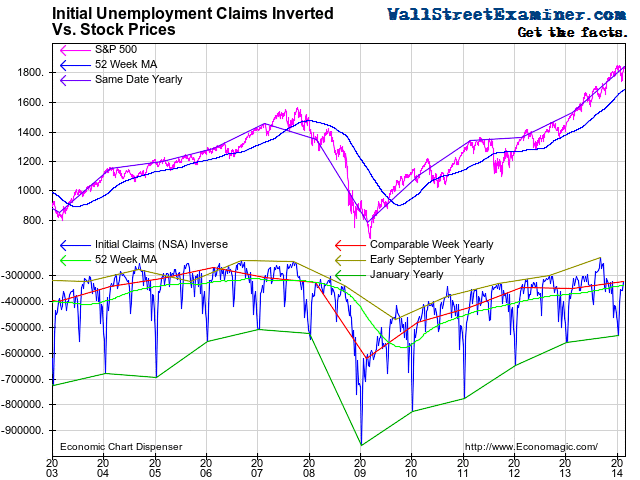The seasonally adjusted headline number for initial unemployment claims came in near consensus expectations at 336,000 for the week ended February 15. Actual filings totaled 323,151 (see Notebelow) which was down 7.9% from the same week a year ago. This is on trend.
Click to enlarge
Downward Trend in Initial Unemployment Stays Intact
The DOL reported that “The advance number of actual initial claims under state programs, unadjusted, totaled 323,151 in the week ending February 15, a decrease of 35,008 from the previous week. There were 351,026 initial claims in the comparable week in 2013.”
The decline of 35,000 was equivalent to -7.9% year over year. This was a big improvement from the prior week’s annual rate of decline of -0.9%, and is near the center of the range of weekly annual percentage changes of the past 15 months.
The week to week decrease was better than the drop of 10,391 for the for this week of February last year and also significantly better than this week in 2012 and 2011.
Stock prices and initial unemployment claims have historically had a strong inverse correlation. A negative divergence developed in the final burst of the last bubble in 2007, with the trend of claims stalling from 2006 through 2007 while stock prices entered their final blowoff. No such divergence has developed yet in the current market but it’s clear that stocks have “bubbled off” over the past 15 months. If the improvement in initial jobless claims stops, consider it a warning that the bubble is in its final stages.
Click to enlarge
Note: The headline number is a seasonally adjusted, fictional number. The Department of Labor also reports the actual number of filings which the 50 states count and send to it weekly, absent a few interstate claims which show up in the following weekly revision of the advance figure released each week for the week before. Those upward revisions are usually in the 1,000 to 4,000 range, which isn’t material in the big picture, but in this case it will make a bad number even worse, perhaps turning the year to year trend negative.




